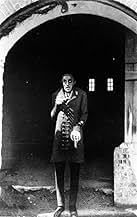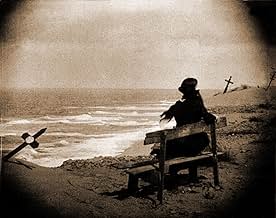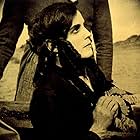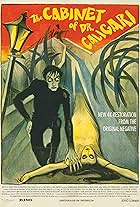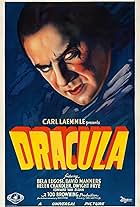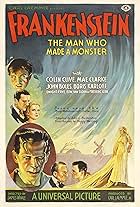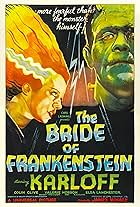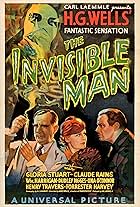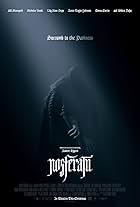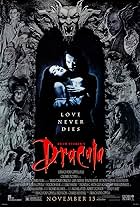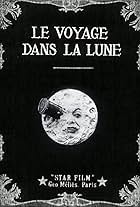Nosferatu: A Symphony of Horror
Original title: Nosferatu, eine Symphonie des Grauens
Vampire Count Orlok expresses interest in a new residence and real estate agent Hutter's wife.Vampire Count Orlok expresses interest in a new residence and real estate agent Hutter's wife.Vampire Count Orlok expresses interest in a new residence and real estate agent Hutter's wife.
- Awards
- 3 wins & 2 nominations
Gustav von Wangenheim
- Hutter
- (as Gustav v. Wangenheim)
Greta Schröder
- Ellen - seine Frau
- (as Greta Schroeder)
Georg H. Schnell
- Harding - ein Reeder
- (as G.H. Schnell)
Karl Etlinger
- Kontrolleur am Kai
- (uncredited)
Guido Herzfeld
- Wirt
- (uncredited)
Hans Lanser-Ludolff
- A magistrate
- (uncredited)
Loni Nest
- Child at Window
- (uncredited)
Josef Sareny
- Head Coachman
- (uncredited)
Fanny Schreck
- Krankenschwester im Hospital
- (uncredited)
Eric van Viele
- Matrose 2
- (uncredited)
- Director
- Writers
- All cast & crew
- Production, box office & more at IMDbPro
Storyline
Did you know
- TriviaThe movie was banned in Sweden due to excessive horror. The ban was finally lifted in 1972.
- Goofs(at around 30 mins) When Hutter is writing his letter to Ellen in Count Orlok's castle, the paper that he is meant to be writing on is clearly blank throughout the scene.
- Quotes
Graf Orlok: Your wife has such a beautiful neck...
- Alternate versionsThere are a confusing number of different surviving prints, restorations and alternate versions of Nosferatu. In the main, there are three 'complete' restorations and two incomplete, partially-restored versions. All five are available on DVD, while the latest two restorations, from 1995 and 2006, are also on Blu-ray. In addition there are countless low-quality public domain DVDs with different lengths, running speeds and soundtracks. All are derived from a single print held by the Museum of Modern Art (MoMA). They usually have replacement American intertitles and are always in black and white; the film was originally color tinted throughout and only meant to be seen that way. This comprehensive article explains all of them simply and clearly: Nosferatu: The Ultimate Blu-ray and DVD Guide.
- ConnectionsEdited into Boo! (1932)
- SoundtracksJeux d'enfants - Galop
Written by Jack Norworth
[Plays during the croquet scene in the 2006 restoration]
Featured review
I despise most vampire stories. Not even Florence Stoker's dear departed husband could keep me occupied after the first act in Transylvania in "Dracula". The vampire has been so romanticized as an archetype (particularly during the '90s) that I can't but feel that most horror fans have forgotten exactly what made us afraid of these guys to begin with. Murnau's "Nosferatu" is just such a reminder and, because of that, is the only screen version of "Dracula" that I have ever loved.
Though Murnau, in the hopes of dodging the copyright bullet, took many liberties with the novel, he actually shot a great part of the film on location (an unusual practice for the time) in the historical Dracula's old stomping grounds: the Carpathian Mountains in Romania. The town, landscapes, and castles were all for real, not just some fancy studio backdrop. To me, it helps convey the tone of authenticity, as you can believe this story being told. As for Max Schreck, no charming, suave seducer is he. With his bald head, bushy eyebrows, rat-like teeth, pointed ears, nails as long as the fingers they are attached to, emaciated build, and stare that seems to come from the bottom of Hell itself, he is the primal, archetypal image of the vampire of legend.
While some could interpret this tale as a subtext to Nazism or anti-Semetism, at it's core, it's simply the tale of a monster, who brings ruin and death in his wake. That such a tale has managed to survive it's era, considering the obstacles that could have totally removed it from view, is the gain of all who have seen. Eat your heart out, Bela Lugosi.
Though Murnau, in the hopes of dodging the copyright bullet, took many liberties with the novel, he actually shot a great part of the film on location (an unusual practice for the time) in the historical Dracula's old stomping grounds: the Carpathian Mountains in Romania. The town, landscapes, and castles were all for real, not just some fancy studio backdrop. To me, it helps convey the tone of authenticity, as you can believe this story being told. As for Max Schreck, no charming, suave seducer is he. With his bald head, bushy eyebrows, rat-like teeth, pointed ears, nails as long as the fingers they are attached to, emaciated build, and stare that seems to come from the bottom of Hell itself, he is the primal, archetypal image of the vampire of legend.
While some could interpret this tale as a subtext to Nazism or anti-Semetism, at it's core, it's simply the tale of a monster, who brings ruin and death in his wake. That such a tale has managed to survive it's era, considering the obstacles that could have totally removed it from view, is the gain of all who have seen. Eat your heart out, Bela Lugosi.
Details
- Release date
- Country of origin
- Official site
- Languages
- Also known as
- Nosferatu
- Filming locations
- Starhrad Castle, Nezbudská Lúcka, Slovakia(castle in ruins)
- Production companies
- See more company credits at IMDbPro
Box office
- Gross worldwide
- $45,595
- Runtime1 hour 34 minutes
- Sound mix
- Aspect ratio
- 1.33 : 1
Contribute to this page
Suggest an edit or add missing content





